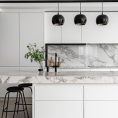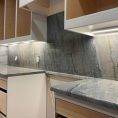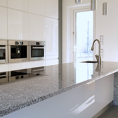Countertop Options for a Transitional Kitchen Design
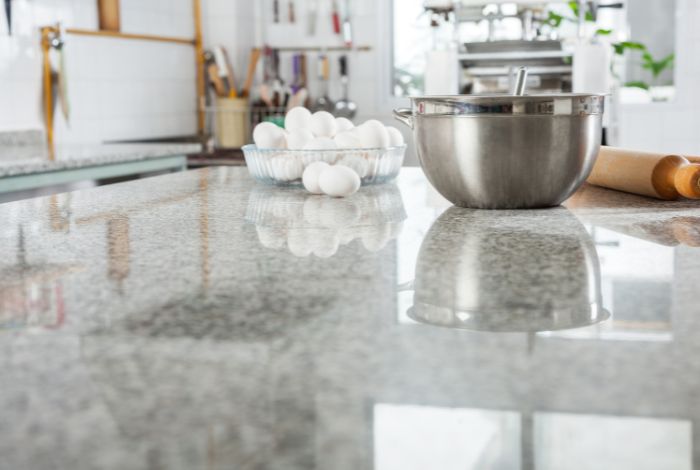
A transitional kitchen combines the warmth and comfort of traditional design with the seamless functionality of contemporary styles. How to Choose Countertop Material for a Blend of Both Styles? The ideal countertop complements the kitchen’s aesthetic but is also designed for strength and functionality.
What Makes a Transitional Kitchen Transitional?
The key to transitional kitchens is blending elements from the classic and contemporary styles, so their appeal is very versatile and will stand the test of time. Some key features include:
- Neutral color palettes (whites, grays, soft earth tones)
- You are taught from data up to October 2023.
- This style is minimal, almost all silhouettes are clean lines with delicate detailing
- Ornate is balanced out with minimalism
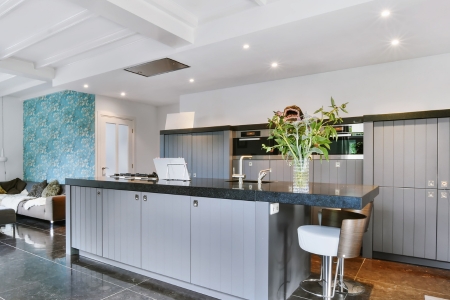
Transitional Kitchen Countertop Material Guide
The Best of Both Worlds: Quartz
Quartz is also perfect for a transitional kitchen because it is durable, low maintenance and pairs so well aesthetically with other materials.
- Pros: Non-porous, stain-resistant and comes in a variety of colors and patterns that imitate natural stone.
- Best Look: Soft white, light gray or marble-look quartz work seamlessly in a transitional design.
TimeLess Essence: The Alluring Nature of Granite
Granite provides a timeless, elegant appearance that complements both modern and traditional kitchen components.
- Pros: Sustainable, heat resistant, and come in a variety of fun designs.
- Best Look: Subtly veined neutral-toned granite maintains design cohesion.
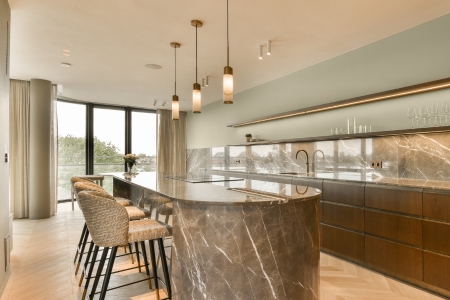
Marble: Elegant and Classic
Marble countertops lend an elevated and sophisticated touch to any transitional kitchen.
- Pros: Attractive, luxurious aesthetic, natural veining adds interest.
- Cons: It needs to be sealed and maintained regularly.
- Best Look: Light gray or white marble with subtle veining adds an eternal quality.
Soapstone: Soft and Organic Feel
For those wanting a warmer, more organic feel, soapstone is a great choice.
- Pros: Non-porous and naturally antibacterial, develops a lovely patina over time.
- Best Look: Dark gray or soft black soapstone, with delicate veining, suits both traditional and modern cabinetry.
Butcher Block: A Rustic, Yet Modern Choice
Wood countertops, like butcher block, add warmth and texture — making them perfectly suited for a transitional kitchen.
- Pros: Provides warmth, doubles as an accent on kitchen islands.
- Cons: Needs upkeep and sealing.
- Best Look: White or gray cabinetry works well with light oak or walnut butcher block.
Selecting the Right Color and Finish
For a transitional feel, choose neutral colors including whites, beige, gray and lighter browns. Pass over anything too bold in color or overly polished in finish; a subtle matte or honed finish contribute to the overall balance.
Incorporating Countertops with Other Elements
A transitional kitchen should flow seamlessly between countertops and backsplashes, cabinetry, and hardware — so:
- For a classic but modern aesthetic, use marble or quartz countertops with shaker-style cabinets.
- Go with a subway tile or herringbone backsplash for timeless appeal.
- Use mixed metal hardware (brass, black, or nickel) to provide depth and interest.
Choosing the right countertop in a transitional kitchen means striking a balance between traditional appeal and modern practicality. Whatever you select, whether quartz for utility, or marble for beauty, or butcher block for warmth, the fact remains that the ingredients need to be harmonious in terms of materiality, color and finish. Your kitchen will be eternally elegant and warm, regardless of whether you lean towards classic or trendy design, with the appropriate countertop.

